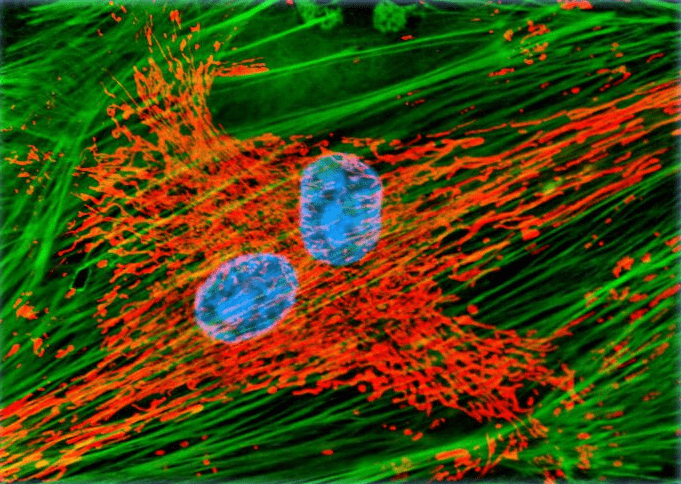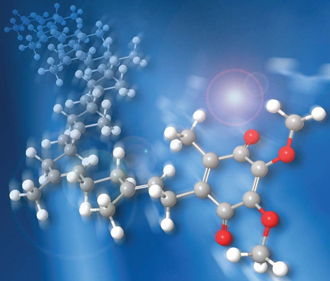
It’s an unfortunate fact of nature: mitochondrial function tends to decline with age. Along with that comes a host of physiological changes that cumulatively result in the phenomenon we all experience as aging and senescence.
The centrality of mitochondrial dysfunction in the aging process cannot be overstated. This is especially true when considering the vasculature, says John Salerno, DO, founder of the Salerno Center for Complementary Medicine, an anti-aging clinic based in New York City.
Beyond their obvious role in producing adenosine triphosphate (ATP), the mitochondria are also involved in heme biosynthesis, amino acid and nitrogen metabolism, and calcium homeostasis. They also regulate apoptosis.
Mitochondrial dysfunction, whether reflective of genetic predispositions, environmental factors, or simple aging, tends to show up in the tissues with the highest energy (ATP) demands. That includes the heart and the vasculature.
Dr. Salerno, whose practice is largely focused on healthy aging, holds that mitochondrial function in the vasculature is an often overlooked piece of the cardiovascular disease equation. By addressing it, clinicians can go a long way toward preventing serious cardiovascular episodes, and improving the circulatory health of their aging patients.
The Center of the Storm
Mitochondria represent about 5% of vascular smooth muscle cell volume, and 2-4% of endothelial cell volume. They are integral for maintaining vascular tone, facilitating cellular transport, and producing energy. They also play key roles in calcium signaling and redox homeostasis.
In short, mitochondrial function is central to endothelial function, and the age-related declines in mitochondrial health translate directly into negative endothelial changes.
Salerno stresses that the endothelium is more than just a passive lining for the circulatory system’s elaborate network of plumbing. We often forget that it is a highly active tissue that regulates fluid and molecule traffic between blood and tissues; provides an anti-coagulant surface; contributes to vascular hemostasis and repair; and, of course, regulates blood flow second by second over the course of a lifetime.
Flow-mediated dilation (FMD), an important measure of endothelial function, tends to decrease as people age (Wray et al. Hypertension. 2012). The changes are parallel to the changes in mitochondrial function, and that translates into decline of both vasodilatory capacity and vasodilation time. (Park et al. AJP Heart and Circ. 2015).
To a large extent, these changes are mediated by increased accumulation of reactive oxygen species (ROS) in the mitochondria, at the same time as mitochondrial homeostatic capacity is declining. ROS like superoxide, hydrogen peroxide, peroxynitrite and hydroxyl radicals all damage mitochondrial proteins, lipids, and DNA, impairing the proper function of the mitochondria.
time as mitochondrial homeostatic capacity is declining. ROS like superoxide, hydrogen peroxide, peroxynitrite and hydroxyl radicals all damage mitochondrial proteins, lipids, and DNA, impairing the proper function of the mitochondria.
Further, these mitochondrial ROS, if not neutralized, diffuse out into the cytosol where they can damage other organelles and cellular components.
In the endothelium, the net result is increased oxidative stress, reduced responsiveness to nitric oxide, impaired endothelial function, and ultimately the symptomatic manifestations of cardiovascular disease.
The bad news is that mitochondrial function declines across the board as people age, says Dr. Salerno, citing a paper published last year by Song-Young Park, and colleagues.
Lifestyle Interventions
The good news is there’s are lifestyle and nutraceutical options that can mitigate or even reverse these trends.
Exercise training, for one, can do a lot to improve vascular mitochondrial function, Salerno noted. Over time, it increases vascular mitochondrial respiratory capacity, and improves vascular redox balance.
In their excellent 2011 review entitled, Aging and Vascular Endothelial Function in Humans, Seals and colleagues at the University of Colorado’s Department of Integrative Physiology, describe a number of nutritional interventions that may play a role in improving endothelial function.
Among them:
- Vitamin C (Ascorbic acid): acute administration can selectively improve or restore brachial FMD and endothelium-dependent dilation (EDD) in older adults. (Eskurza I, et al. J Physiol. 2004)
- L-Arginine: Though it does not increase brachial artery FMD in healthy young adults, it can produce small improvements in those over age 70 (Bode-Boger SM, et al. Vasc Med. 2003)
- Low Sodium Diets: Salt restriction tends to improve brachial artery FMD in older adults with elevated systolic pressure (Jablonski et al. Ther Adv Cardiovasc Dis. 2009), as well as in those with diabetes and obesity (Dickinson KM, et al. Am J Clin Nutr. 2009). Diets high in vegetables and fruits, and fiber, potassium magnesium and calcium, but low in saturated fats also appear to be beneficial.
Given its prominence in the mitochondria of all eukaryotic cells, and its vital role in generating ATP, Co-enzyme Q10 is a natural candidate when considering nutraceuticals with potential to improve vascular function. There’s a lot of good basic science to support that hypothesis. But Dr. Salerno says that in real world clinical practice, most Q10 supplements fall short.
Improving CoQ10’s Performance
That’s because exogenous Q10 taken orally has poor bioavailability, owing to its large molecular weight and lipophilicity. To be effective in modulating mitochondrial function, Co-Q10 needs to be transported through cell membranes, and then into the mitochondria. The reality is that with most of the available forms, only a minute amount reaches the mitochondrial targets.
 Back in the early 2000s, researchers in New Zealand began experimenting with methods to increase the delivery of Q10 to th mitochondria. They found that by attaching CoQ10 to triphenylphosphonium—a lipophilic ion—and taking advantage of the large mitochondrial membrane potential, they could markedly increase mitochondrial uptake.
Back in the early 2000s, researchers in New Zealand began experimenting with methods to increase the delivery of Q10 to th mitochondria. They found that by attaching CoQ10 to triphenylphosphonium—a lipophilic ion—and taking advantage of the large mitochondrial membrane potential, they could markedly increase mitochondrial uptake.
The result of their research was the emergence of a new form of ubiquinol (the reduced form of CoQ10) bound to a 10-carbon alkyl chain, and named “Mitoquinol.” This compound can penetrate the mitochondria in large amounts, says Salerno.
In a pre-clinical study published last year, Park’s group at the University of Colorado looked at skeletal muscle feed arteries (SMFAs) taken from artery 44 heathy humans of varying age. They found that Mitoquinol, known commercially as MitoQ, can reverse several indicators of age-related vascular dysfunction. It appears to do so by nitric-oxide mediated mechanisms (Park SY, et al. Acta Physiol. 2018).
“Mitochondria-targeted antioxidants may have utility in terms of counteracting the attenuated blood flow and vascular dysfunction associated with advanced aging,” they conclude.
The Boulder group also tested MitoQ in 20 healthy older adults (60-79 years) with impaired endothelial function indicated by brachial artery FMD of less than 6%. In a crossover design, the participants supplemented with MitoQ, 20 mg/d, or placebo for 6 weeks, then switched to the other treatment.
The investigators note that brachial artery FMD was 42% higher on average after MitoQ supplementation compared with placebo. In some cases, the increase was as high as 69%.
The improvement was associated with amelioration of mitochondrial ROS-related suppression of endothelial function. ΜitoQ also reduced aortic stiffness and lowered the levels of oxidized LDL—an indicator of oxidative stress.
“These findings in humans extend earlier preclinical observations and suggest that MitoQ and other strategies targeting mitochondrial reactive oxygen species may hold promise for treating age-related vascular dysfunction.” (Rossman MJ, et al. Hypertension. 2018)
These findings, though still preliminary, do have important clinical implications, said Dr. Salerno.
Mitochondrially-targeted CoQ10 could help significantly in people with peripheral artery disease—which affects 12-20% of individuals over age 60. It also looks promising for people with heart failure–that’s 5.7 million US adults.
Join us this Thursday, March 21, for an in-depth webinar exploring the role of mitochondrial dysfunction in cardiovascular disease and other disorders. Dr. Chris Meletis will share practical clinical strategies for optimizing mitochondrial function and reducing disease risk. This free webinar will be hosted by Holistic Primary Care, and sponsored by MitoQ: Register now for this free educational program.
END







